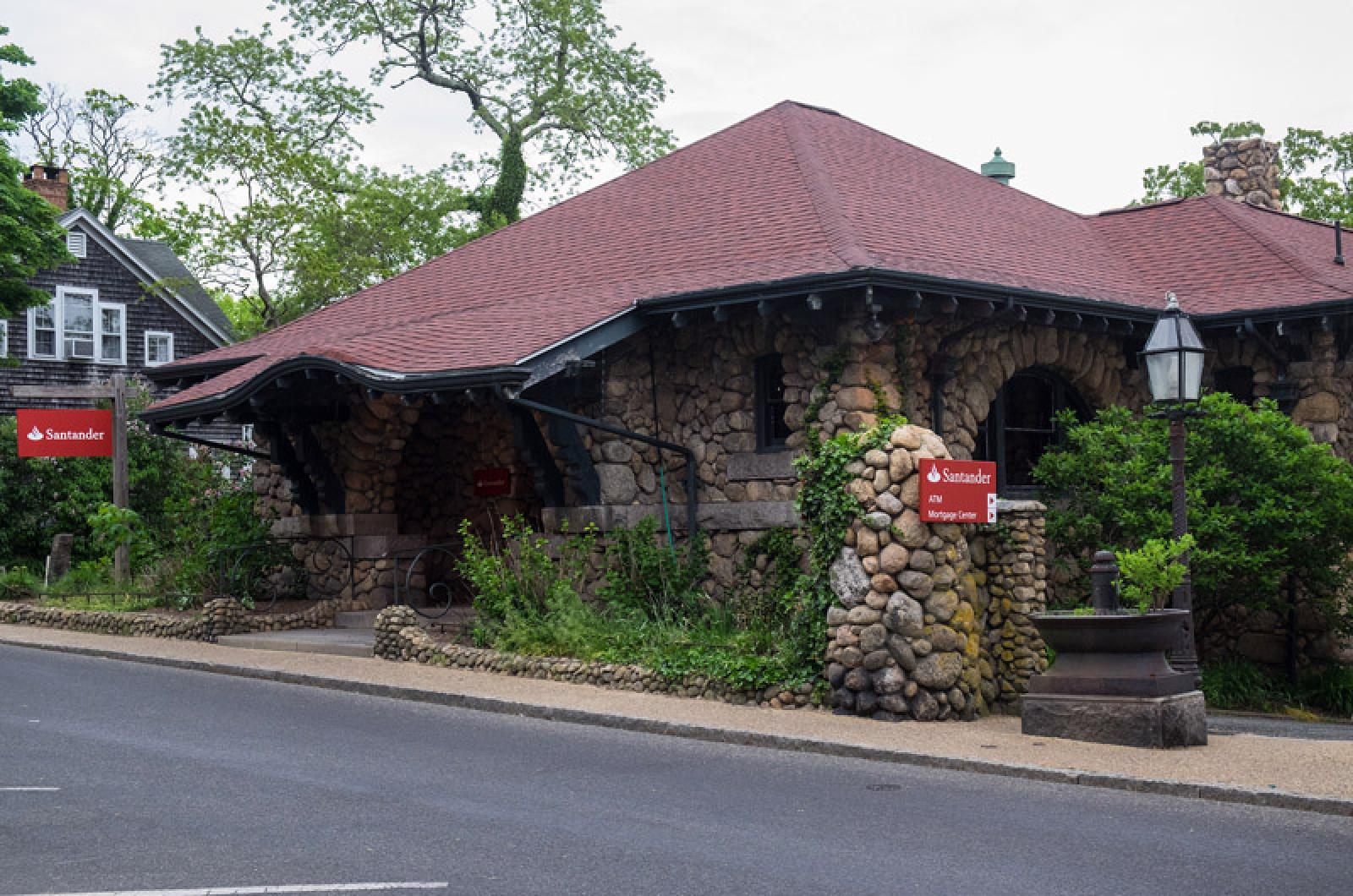The Martha’s Vineyard Commission last week wrapped up a public hearing on the iconic Stone Bank in Vineyard Haven, where a Spanish tile roof was replaced with red asphalt shingles last year.
The project was subsequently referred to the commission for review as a development of regional impact (DRI). A public hearing opened May 4 and continued on Thursday.
Attorney Sean Murphy, speaking on behalf of Santander Bank, which owns the building, said the company had no interest in replacing the shingles with clay tiles, which he said would cost either $276,260 or $388,950, depending on the style.
Town building inspector Ken Barwick had mistakenly approved the project last fall. The town selectmen later allowed it to move forward, in light of an approaching hurricane.
Mr. Murphy said that under a revised DRI policy adopted last year, the project would not have been referred to the commission in the first place, since the building was constructed after 1900. But commissioner Fred Hancock noted that the older policy was still in place at the time of the referral.
The town historic commission is urging the commission to require the bank to replace the clay tiles.
“We understand that it was an administrative snafu,” historic commission chairman Harold Chapdelaine said Thursday. He added that a member of his commission had twice approached bank management prior to the roof project to warn of deteriorating conditions on the building’s exterior.
“With a management structure such as [at a] bank and a building of that age, that due diligence would have required a little bit more investigation on their part to ensure compliance,” he said.
Town selectmen Tristan Israel and Melinda Loberg, who attended the hearing, also spoke in favor of replacing the tiles.
“I don’t think anybody would deny that it’s an iconic building,” Mr. Israel said, calling the MVC the town’s “lifeline” in restoring the roof. He acknowledged that it would be more expensive to install clay tiles but not impossible. “I think options can be explored that maybe are not as draconian as the applicant is describing,” he said.
Commissioner Linda Sibley asked for an estimate for how long asphalt shingles would last compared to tiles.
In response to a question from commissioner Kathy Newman, Mr. Murphy said he did not know whether Santander Bank, headquartered in Santander, Spain, understood the implications the project had for the Island community. “It’s a massive company,” he said. “When they started that roof, the staff probably didn’t even know. People probably just showed up and started ripping the roof off.”
He said that regardless of the commission’s decision, nothing would change until after the summer season.
Mrs. Sibley closed the hearing, leaving the written record open until June 1.
The commission also wrapped up a public hearing on a historic demolition on Franklin street, also in Vineyard Haven, discussing a revised plan that aims to bring a proposed replica house more in line with the Greek Revival period.
Because the existing house lies outside the William street historic district, the town historic commission does not have jurisdiction. But in response to MVC concerns, applicant William Westman had agreed to meet with the commission anyway.
A revised plan for the new house eliminates sliding French doors on the first floor and shortens the height of the windows on the second floor, among other changes. A proposed addition would be slightly lower than the main building, also in keeping with the period.
Mr. Westman said he was unable to satisfy a request for smaller dormers, since he said that would make it impossible to meet code. “Other than that, I gave them every single thing that they were looking for and more,” he said. “I’m as far as I can go.”
But Mrs. Sibley said that the plans are still only about 95 per cent complete. “If we are going to approve a demolition based on what he is proposing for a replacement, we don’t have accurate representations,” she said, adding that conditioning the project would be a challenge.
MVC executive director Adam Turner urged the commission to move on. “This guy has been here four times,” he said. “I think he has told you what he is going to do.”
The commission’s land use planning committee will take up the proposal on Monday and develop a recommendation for the full board.
In its only vote of the evening, the commission unanimously approved a four-lot subdivision off Oyster Lane in Chilmark with no conditions. The project will include trail easements with buffer zones along two edges of the property, and a one-acre youth lot subject to town approval. Property owner David Damroth has offered to prohibit further subdivision that would create buildable lots at the site.






Comments (7)
Comments
Comment policy »